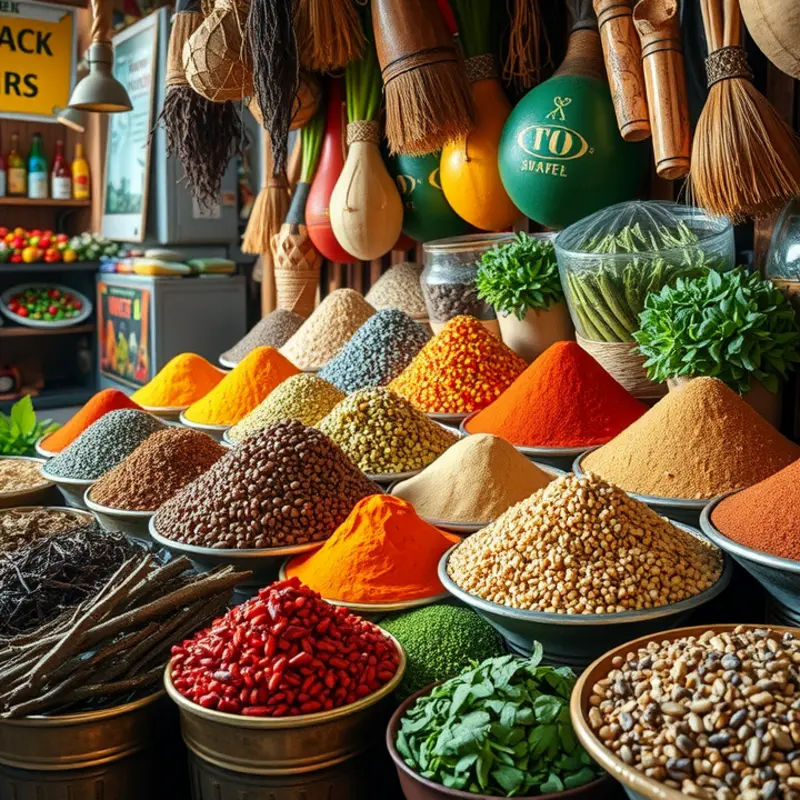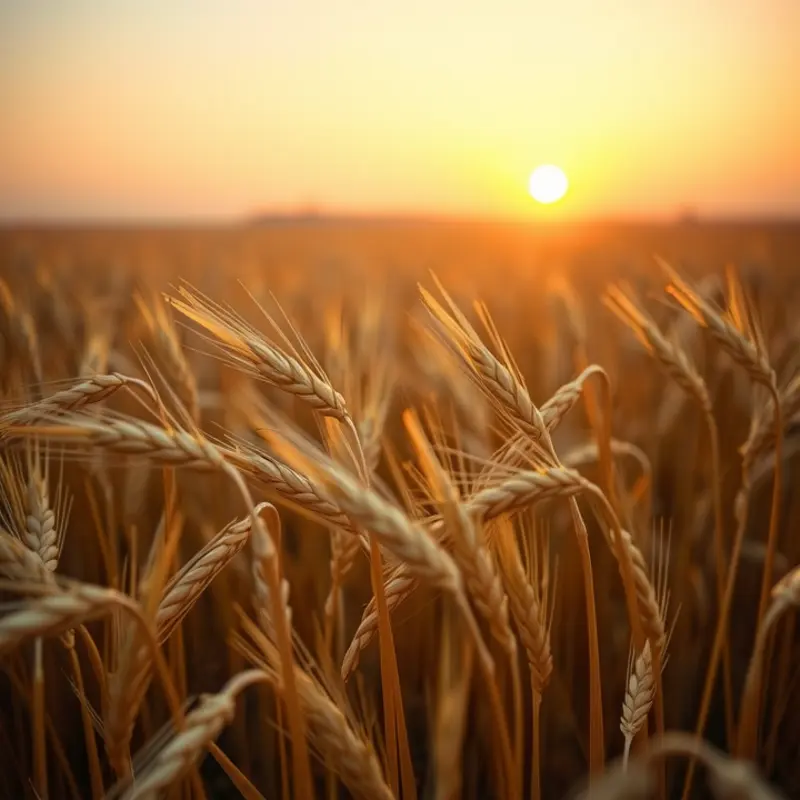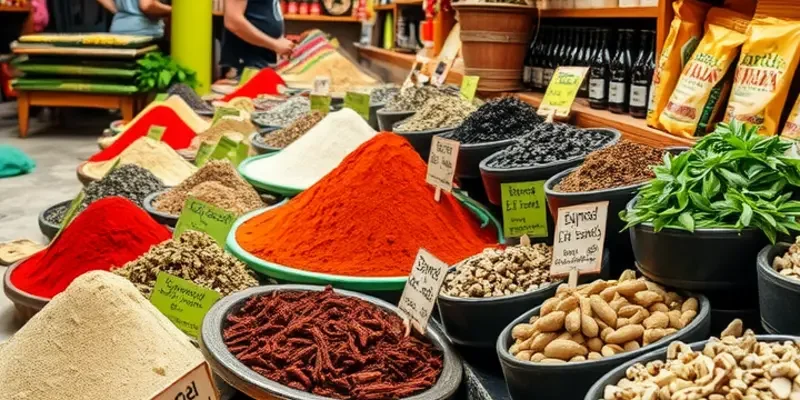Across cultures, food serves as a powerful medium for storytelling and tradition. From fragrant spices to staple grains, every ingredient carries symbolic meaning and reflects the values and history of a community. This exploration into the world of symbolic ingredients unveils how various cuisines around the globe utilize these elements not just for nourishment, but as a form of cultural identity and expression.
The Spice of Life: Cultural Narratives in Flavors

The world of spices is rich with cultural stories and historical layers, revealing vivid narratives that transcend mere culinary function. Spices and herbs are the vibrant threads weaving through the fabric of cuisines worldwide, often standing as symbols of cultural identity and celebration. Their global significance extends beyond their flavors to the emotions and histories they evoke, shaping how we experience food across regions.
In Persian cuisine, the opulent hue of saffron threads is synonymous with luxury and sophistication. This golden spice, often more costly than gold by weight, encapsulates the essence of royalty and abundance. Its origins trace back to the regions surrounding the area now known as Iran, and its cultivation and harvest are meticulous processes passed down through generations. The saffron fields become a tapestry of cultural pride and economic vitality each harvest season. Serving dishes laden with saffron at celebrations signifies not only a commitment to culinary excellence but also to preserving heritage, granting diners an enriching experience in tradition and taste.
In contrast, the fiery chili pepper is at the heart of Mexican gastronomy, its vibrant essence echoing the lively spirit of the culture. Introduced to Europe by Christopher Columbus, this ingredient has inequitably marked Mexican food with its robust heat and vivid color. Chili peppers are fundamental in creating the layers of flavors that Mexican cuisine is celebrated for, reflecting resilience and the bold nature of its people. Beyond its characteristic piquancy, the chili pepper symbolizes vitality, strength, and an embrace of life’s zest, mirrored in the jubilant festivals and hearty communal meals that characterize Mexican society.
The narrative of spices also encompasses the fragrant mix of herbs and spices that define Indian cuisine. Garam masala, a blend of warming spices, captures the complex interplay of flavors and traditions that vary from region to region. Each family adds its unique version of this spice blend, a culinary fingerprint passed through generations. Not just an additive but a tradition in itself, garam masala illustrates how integral spices are in defining the communal and familial experience of food preparation and enjoyment in India.
Exploring the significance of spices sheds light on their universal role as cultural sentinels, telling stories of trade, migration, and adaptation. As the global pallet continually evolves, there is an increasing incorporation of spices into various cuisines. This integration signifies not only the expansion of flavor profiles but also an acceptance and appreciation of the diverse cultures they represent. For those keen to incorporate these flavors at home, understanding the usage and storage of these spices is essential. Luckily, strategies such as safer storage of sauces can ensure these vibrant ingredients retain their potency. Hence, their narrative continues in every dish created.
Spices, therefore, embody more than mere taste enhancers; they are a testament to the human experience, connecting us across various cultures and histories through their vivid flavors and the stories they tell.
Grains of Wisdom: The Heart of Culinary Traditions

Grains are the silent custodians of tradition, symbolizing life, fertility, and community across diverse cultures. These humble kernels form the backbone of culinary practices and hold sacred meanings beyond mere sustenance.
Rice, for instance, is a cornerstone of Asian cultures. It not only nourishes the body but is also deeply embedded in spiritual and cultural rituals. In countries like Japan, rice offerings are part of Shinto ceremonies, symbolizing purity and life. During weddings, couples might share rice as a gesture of unity, while harvest festivals celebrate the gratitude for this life-sustaining grain. Similar reverence for rice can be found in the Indian subcontinent, where it is central to religious and cultural festivities.
Across oceans, the quinoa crop, native to the Andes, tells stories of ancient civilizations. Known as the “mother grain,” quinoa was revered by the Incas as a gift from the gods. Its resilience in harsh climates made it a vital agricultural product, and it has become synonymous with health and sustainability in modern food cultures. In traditional Andean communities, quinoa plays a crucial role in rituals celebrating Pachamama, or Mother Earth, with local farmers performing symbolic gestures to ensure abundant harvests.
The wheat fields of the Mediterranean hold another narrative, symbolizing continuity and community. Wheat’s influence extends beyond nutrition; its golden strands weave through stories of cultivation and shared meals. In ancient Greece, wheat was intertwined with the worship of Demeter, the goddess of agriculture. Bread, made from wheat, is considered a central element in Mediterranean tables, not just as sustenance but as a token of hospitality and togetherness.
Communities engage in age-old practices during grain harvest and preparation. In rural Asia, farmers come together to plant rice, following lunar calendars to ensure alignment with nature’s rhythms. Similarly, Andean farmers sow quinoa using traditional techniques passed down through generations, reinforcing bonds between families and the land. In the Mediterranean basin, wheat is often hand-harvested in cooperative efforts, reflecting communal ties.
Grain preparation in these cultures can be a ritualistic act. In Japan, pounding rice into mochi is a communal New Year’s event, symbolizing strength and renewal. The meticulous preparation of arepas in South America or the hand-kneading of Mediterranean breads showcases respect for time-honored techniques.
These grains nurture far more than the body, feeding a tapestry of shared experiences and collective memory. They remind us of our ancestors’ wisdom and the intrinsic link between food, culture, and community. For further insights into global culinary influences, visit the culinary influences through trade blog post, which explores how trade has further shaped these deep-rooted traditions.
Final words
The culinary world is a tapestry woven with diverse ingredients that carry rich stories and cultural significance. From the spices that flavor dishes to the grains that sustain communities, these symbolic ingredients help us understand and appreciate the shared human experience through food. Each bite is a reflection of history, identity, and the unique customs that shape our approach to nourishment. Embracing these culinary traditions not only enhances our dining experience but also fosters a deeper connection to different cultures across the globe.








